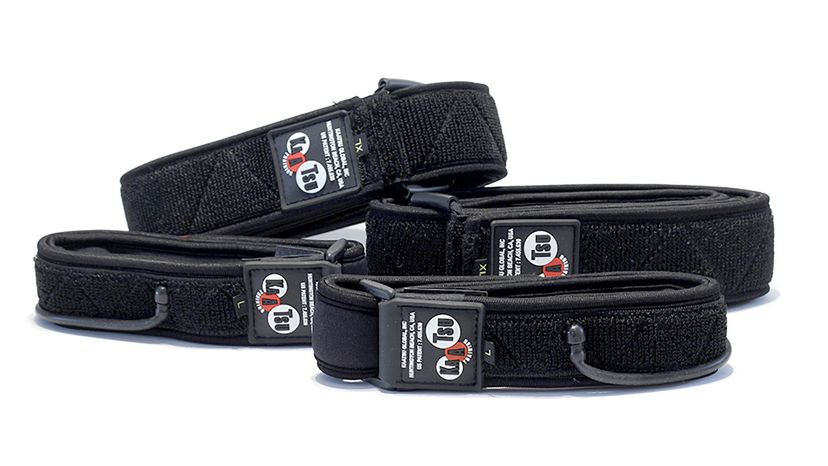 “By far the best-known version of the blood flow restriction training method originated in Japan in 1966. Known as Kaatsu, it is the brainchild of Yoshiaki Sato, a former power lifter turned exercise physiologist. Kaatsu
“By far the best-known version of the blood flow restriction training method originated in Japan in 1966. Known as Kaatsu, it is the brainchild of Yoshiaki Sato, a former power lifter turned exercise physiologist. Kaatsu
The Tokyo Olympics are officially over. All the points are scored, the medals awarded and the flame extinguished. Now athletes have three years to prepare for the next Games in Paris.
But where to start Olympic preparation? For some athletes, the next round of training will likely involve a technique that garnered a lot of buzz this year in Tokyo: blood flow restriction training, otherwise known as Kaatsu.
The Birth of BFR Training
Blood flow restriction training, or BFR training, is a technique in which athletes intentionally limit the blood flow to a specific area of the body during a workout using a band or cuff.
The very first study on BFR was published in the Journal of American Medicine in 1937. However, it did not garner much attention at the time. By far the most well-known version originated in Japan in 1966. Known as Kaatsu, it is the brainchild of Yoshiaki Sato, a former powerlifter turned exercise physiologist. By his own account, inspiration first stuck when a young Sato attended a Buddhist ceremony that required him to sit on the floor in the traditional seiza position (“correct sitting,” which means sitting with legs bent, knees forward and buttocks resting on the heels) for an extended period of time. After a while, his lower legs began to go numb. Upon standing up, he noticed that the sensation was similar to the dead-legged feeling of completing a hard workout.
This experience prompted Sato to experiment with restricting blood flow to various muscle groups in order to induce similar physiological changes as hard exercise. He found that by lifting light weights with restricted circulation, he was able to "achieve a significant pump up effect," by his own account. After a patent and a Ph.D., he began selling his system in the 1980s.
That’s the background; let’s take a closer look at what BFR actually does to the body.
Marinating Muscles and Avoiding Atrophy
If you’ve never used them, you might be wondering: what do Kaatsu and similar BFR bands feel like? "Just like a blood pressure cuff," says Jamie Burr, a cardiovascular and exercise physiologist at the University of Guelph in Ontario, Canada. "You can feel the congestion of blood. There’s a tightness and a pressure."
When blood flow is restricted to active muscles, your body can’t effectively clear lactic acid, which leads to a buildup of metabolic byproducts that bathe your muscle fibers in a stress-inducing mixture. "In my lab, we affectionately refer to that as marinating," says Burr.
Once blood is allowed back into the marinated muscles, your body will work extra hard to repair them, stimulating growth and strengthening. Essentially, this mimics the effects of very intense exercise using a much lower workload. A systematic review of 237 studies on BFR training found that 78 percent reported "significant" increase in muscle strength compared to a control group.
Aside from elite athlete training, BFR could be beneficial as a therapeutic tool. To test this application, Burr and his team are conducting a study in which healthy athletes use a cast and crutches on one leg to simulate muscular atrophy after a broken bone. After two weeks, the researchers divide the participants into four groups: one treated with BFR, one with electrical stimulation, one with a combination of BFR and electrical stimulation, and one that received no treatment.
The results are yet to be published, but Burr says that they have been encouraging. "Long story short, what we found was this is really effective for an injured athlete in preventing muscle wasting in the first place."
To the Olympics and Beyond
At the Tokyo Olympic Games, a number of prominent athletes, including Team USA marathoner Galen Rupp and swimmer Michael Andrew, were spotted sporting BFR bands around their limbs. And the trend is taking hold with more than just Olympic athletes; the New Orleans Saints reportedly use cuffs to rehab injured players, and NBA player Dwight Howard is a fan.
But if you’re not a professional athlete, should you add BFR to your own training routine?
It depends. The key with BFR training, says Burr, is caution. Properly applied (the research suggests), it can be very beneficial. But used incorrectly — too often, with too much pressure, or in someone with an underlying cardiovascular condition — it can be dangerous. Burr recommends talking to an expert before you try BFR, and starting with only moderate cuff pressure and very few reps.
And then there’s cost. Proper BFR equipment is expensive. Some Kaatsu systems will set you back over $1,000, and even less high-tech gear can go for over $400. However, if you’re willing to spend that much for a training tool, it could provide the proverbial "icing on the cake" before your next big competition. And if you’re looking for BFR in a strictly therapeutic capacity, more and more physical therapy offices are beginning to offer BFR for rehabbing atrophied muscles.
One thing is for sure: BFR isn’t going away any time soon. Even though it got off to a slow start, "it’s really being quite broadly adopted," Burr says.
Now That’s Interesting
Elite athletes have a well-earned reputation for trying some downright bizarre training tools. A few highlights include full-body cryotherapy, sleeping in altitude chambers and Michael Jordan’s infamous strobe light glasses.

